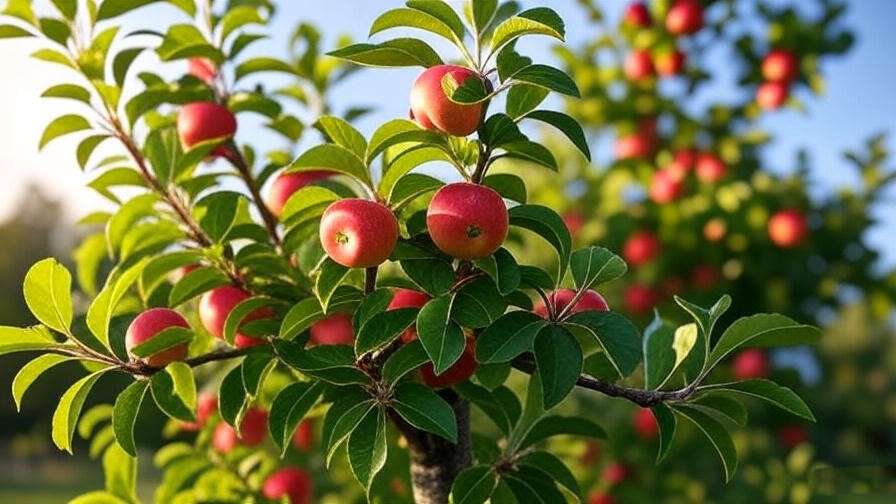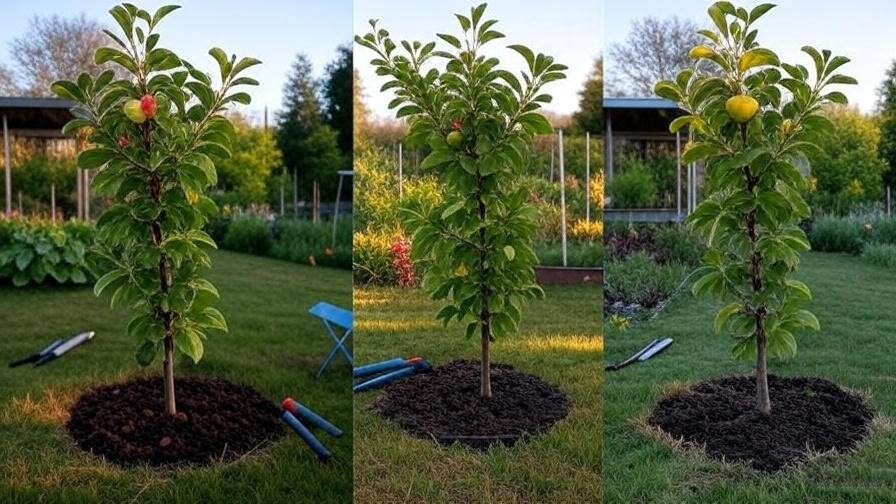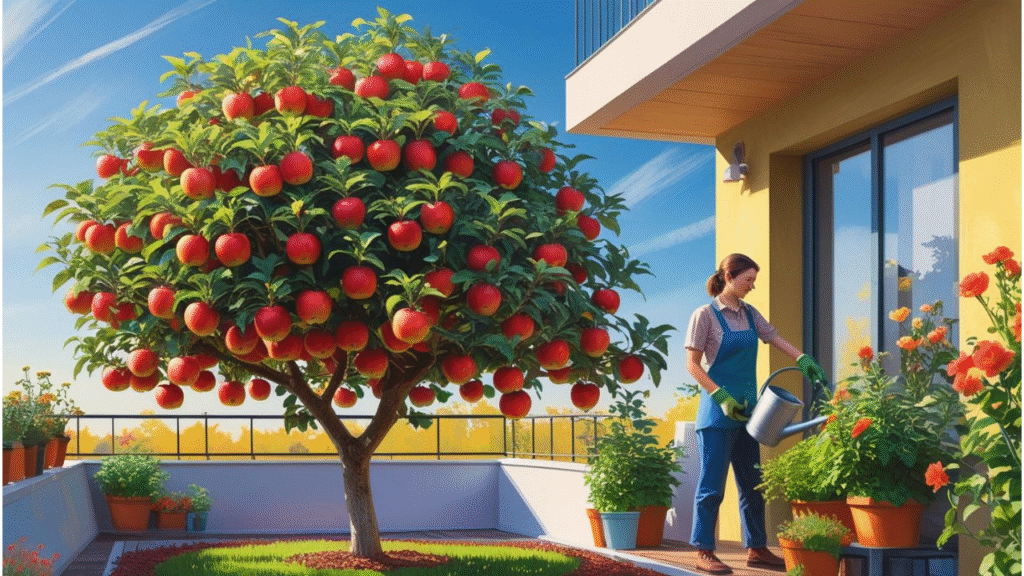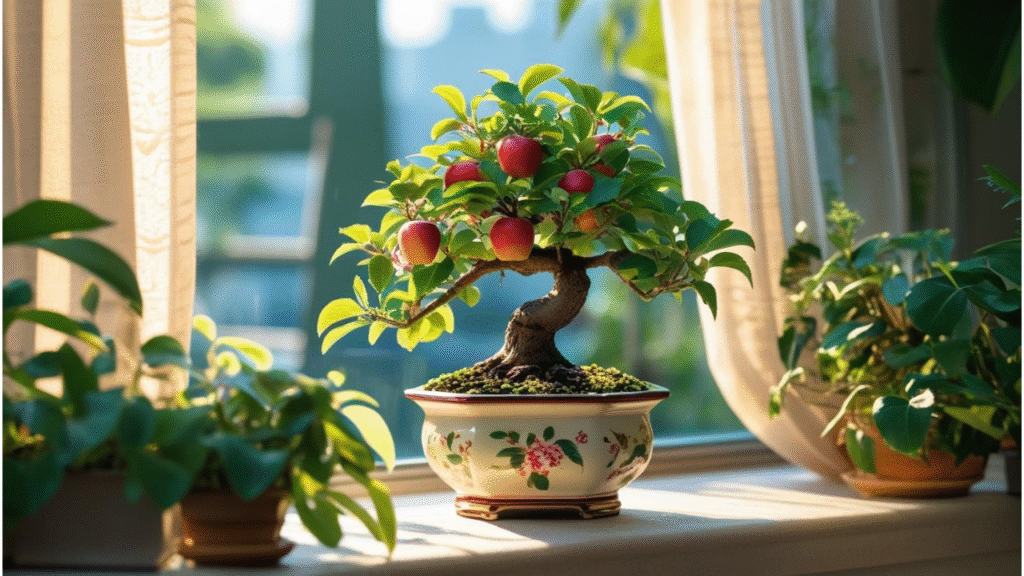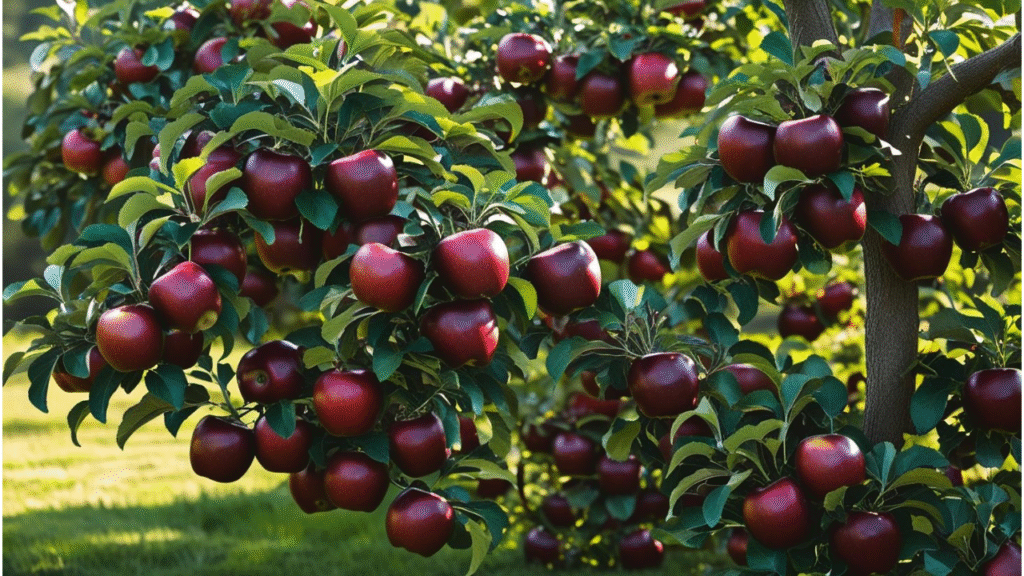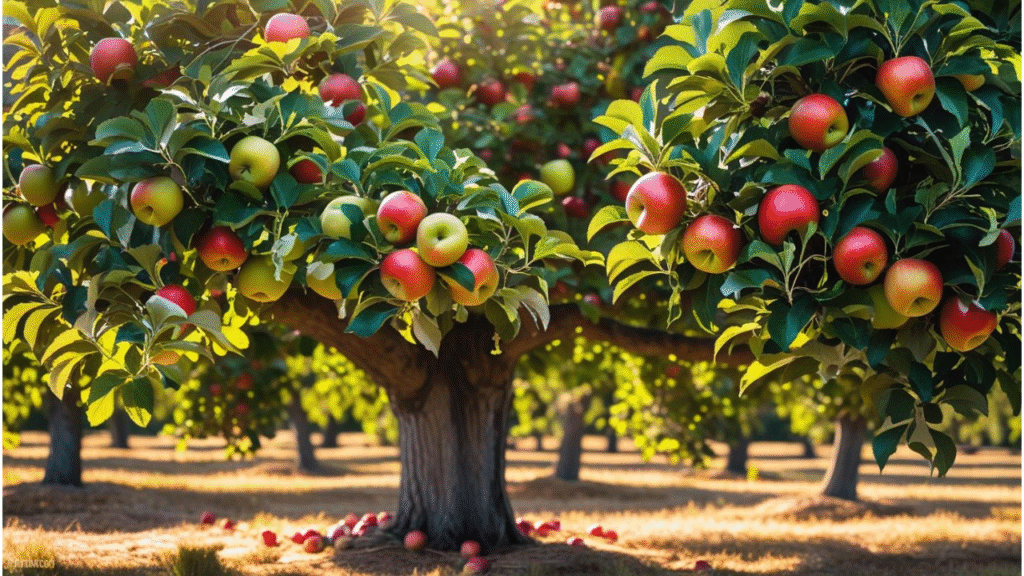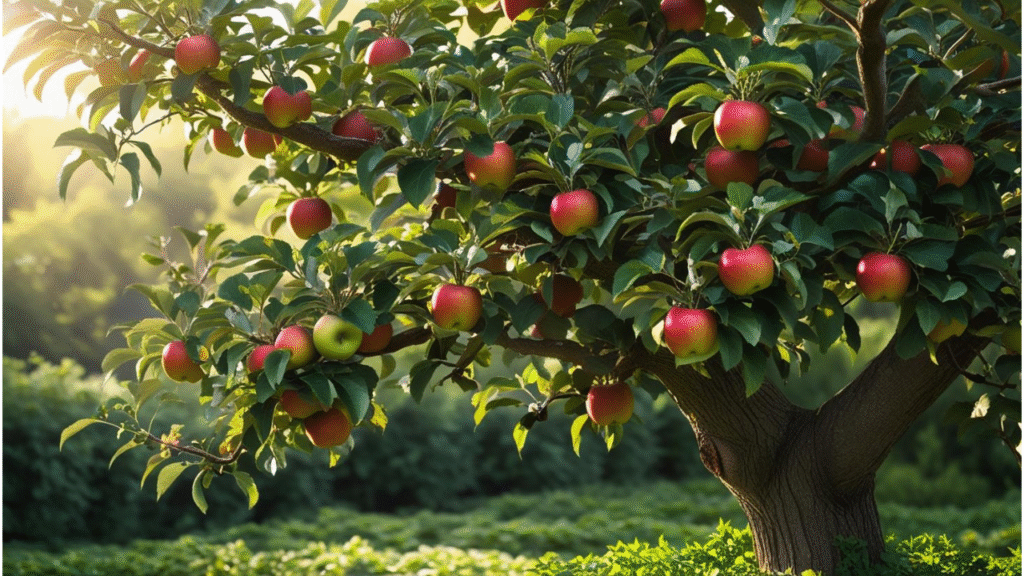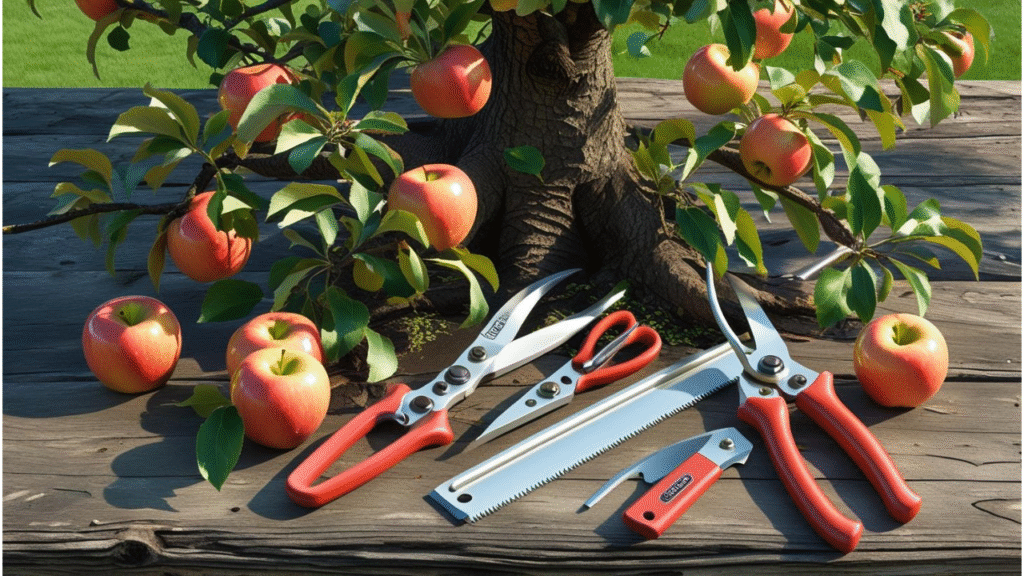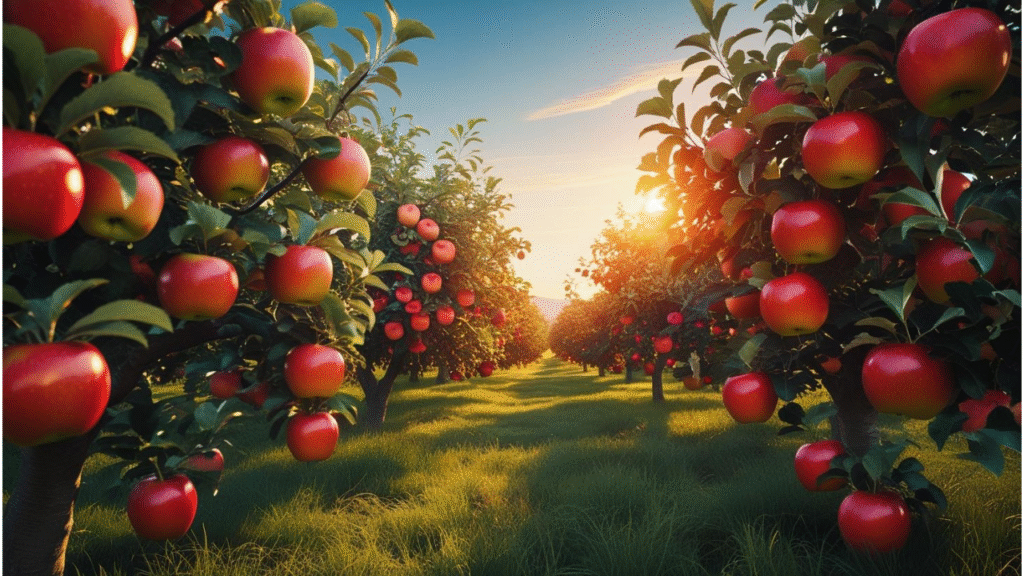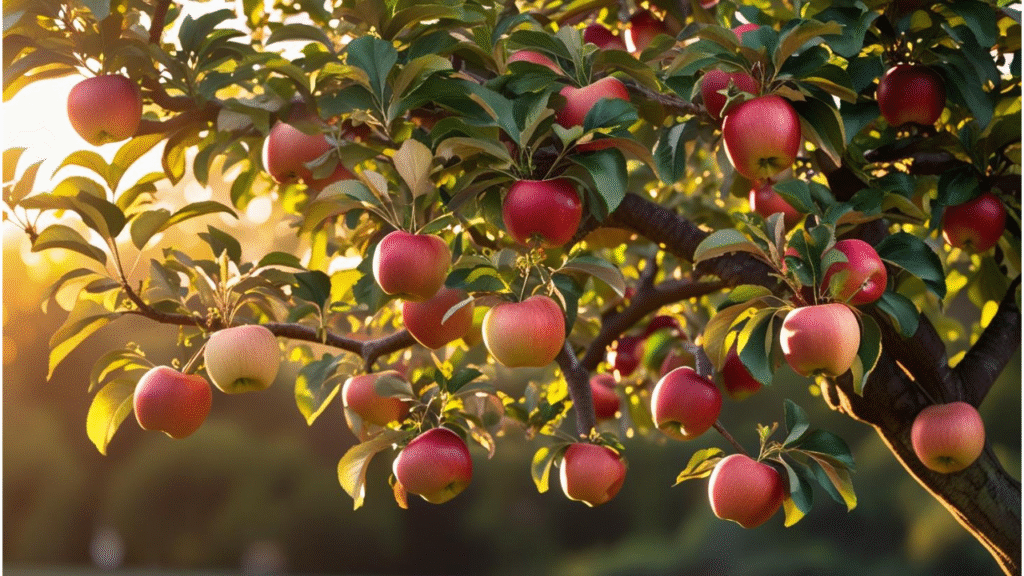Imagine biting into a crisp, sweet-tart Anna apple, freshly picked from your own backyard! 🌟 Growing a thriving Anna apple tree is not only achievable but also incredibly rewarding, even if you live in a warm climate where traditional apple varieties struggle. This heat-tolerant, low-chill variety is a favorite among home gardeners for its adaptability and delicious fruit. Whether you’re a novice or an experienced gardener, this comprehensive guide will walk you through every step to ensure your Anna apple tree flourishes, from planting to harvesting. Backed by horticultural expertise and practical insights, you’ll find actionable tips to solve common challenges and achieve abundant harvests. Let’s dive into the world of Anna apple trees! 🌱
Understanding the Anna Apple Tree 🌱
What Makes the Anna Apple Tree Special?
The Anna apple tree, developed in Israel in the 1960s, is a standout choice for warm climates. Unlike many apple varieties requiring 500–1000 chill hours (hours below 45°F), the Anna thrives with just 200–300 chill hours, making it ideal for regions like the Southern U.S., California, and Mediterranean climates. This deciduous tree produces medium-sized, red-blushed apples with a sweet-tart flavor, perfect for fresh eating or cooking. Its compact size—15–20 feet for standard trees and 8–10 feet for dwarf varieties—fits well in small gardens or urban spaces. Additionally, Anna apple trees are known for their early fruiting, often producing apples within 2–3 years of planting.
Why Choose an Anna Apple Tree for Your Garden?
The Anna apple tree is a game-changer for gardeners in USDA zones 5–9, particularly in warmer zones where traditional apples like Honeycrisp or Fuji may fail to fruit. Its low-chill requirement ensures reliable blooming and fruit set, even in mild winters. Compared to other low-chill varieties like Dorsett Golden, Anna offers superior disease resistance, particularly to apple scab and powdery mildew. Beyond its practical benefits, this tree adds aesthetic value with its spring blossoms and lush foliage, providing shade and beauty. Growing your own apples also reduces reliance on store-bought fruit, offering both cost savings and the joy of homegrown produce.
Planting Your Anna Apple Tree 🌿
Choosing the Right Location
To set your Anna apple tree up for success, select a site with full sun exposure—6–8 hours of direct sunlight daily ☀️. Well-draining, loamy soil with a pH of 6.0–7.0 is ideal, as soggy roots can lead to rot. Test your soil using a home kit or send a sample to a local agricultural extension for analysis. Space is another key factor: standard Anna apple trees need 12–15 feet of clearance, while dwarf varieties require 8–10 feet. Avoid low-lying areas prone to frost pockets, as late spring frosts can damage young buds.
Best Time to Plant
Timing is critical for healthy establishment. In warm climates, plant in early spring to avoid heat stress, while late fall is suitable for cooler zones within the Anna’s range. Planting during dormancy allows roots to establish before the growing season. If you’re in a region with mild winters, early spring planting ensures the tree can handle summer heat with a strong root system.
Step-by-Step Planting Guide
- Prepare the Planting Hole: Dig a hole twice as wide and as deep as the root ball (about 2–3 feet wide and 1.5 feet deep). Loosen the soil to encourage root growth.
- Choose Quality Stock: Opt for bare-root or container-grown trees from a reputable nursery. Look for a healthy root system and a straight trunk with no signs of disease.
- Amend the Soil: Mix native soil with 20–30% organic compost or aged manure to boost fertility. Avoid heavy clay soils without amendments.
- Plant the Tree: Place the tree in the hole, ensuring the graft union (the bulge where the rootstock meets the scion) is 2–3 inches above the soil line. Spread roots evenly and backfill with soil, tamping gently to remove air pockets.
- Water and Stake: Water thoroughly to settle the soil, and stake young trees to protect against wind. Apply a 2–3-inch layer of mulch (e.g., wood chips) around the base, keeping it 6 inches from the trunk to prevent rot.
- Expert Tip: Test soil drainage by filling the planting hole with water. If it takes more than 6 hours to drain, choose a different site or build a raised bed.
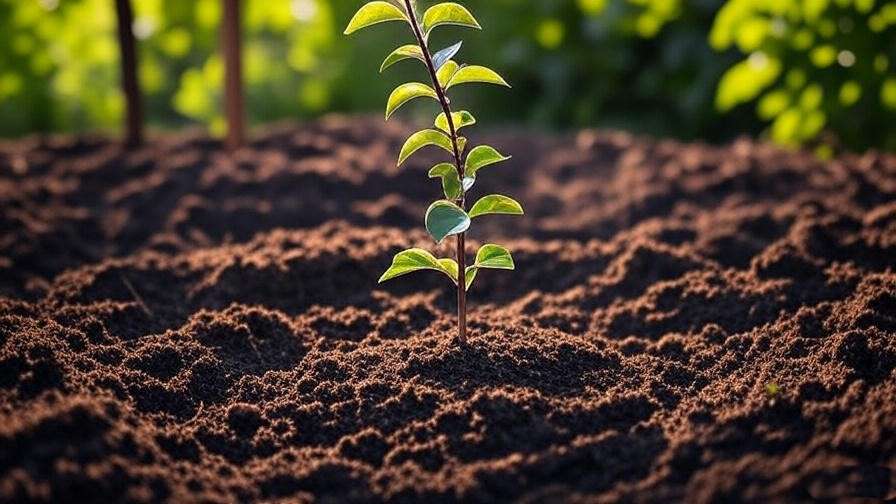
Caring for Your Anna Apple Tree 🛠️
Watering Needs
Consistent watering is crucial, especially during the first two years. Water deeply 1–2 times per week, providing 10–15 gallons for young trees and 20–30 gallons for mature ones, adjusted for rainfall. In hot climates, monitor soil moisture to prevent drought stress. Use a soaker hose or drip irrigation for efficient delivery, targeting the root zone. Overwatering can cause root rot, so ensure the soil dries slightly between waterings. Signs of overwatering include yellowing leaves or a musty odor near the roots.
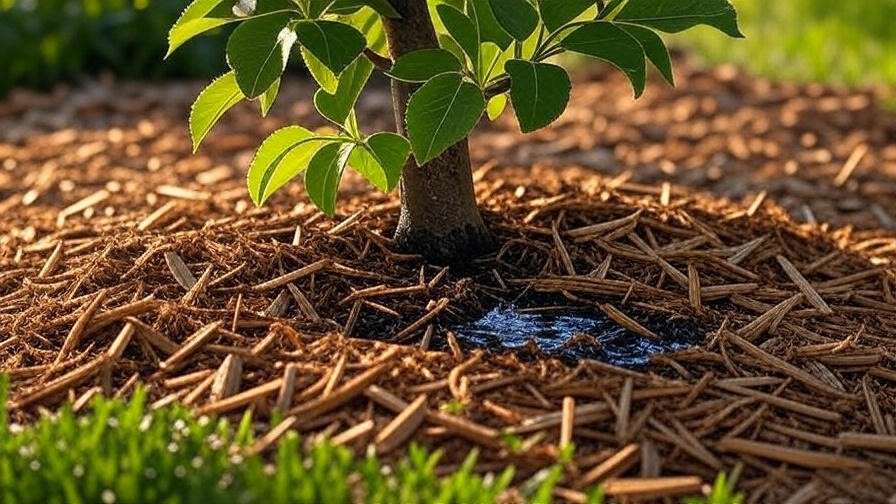
Fertilizing for Optimal Growth
Fertilize your Anna apple tree in early spring (before bud break) and mid-summer to support growth and fruiting. A balanced fertilizer like 10-10-10 (nitrogen-phosphorus-potassium) works well, applied at a rate of 1 pound per year of tree age, up to 5 pounds for mature trees. Organic alternatives, such as compost tea or fish emulsion, are excellent for sustainable gardening. Spread fertilizer evenly around the drip line (the area under the outermost branches) and water thoroughly. Watch for nutrient deficiencies: yellow leaves may indicate nitrogen deficiency, while poor fruit set could signal low phosphorus.
Pruning and Training
Pruning is essential to maintain tree health, encourage fruit production, and ensure good airflow. Prune in late winter or early spring before new growth begins ✂️. For Anna apple trees, aim for an open-center structure to maximize sunlight exposure:
- Thinning Cuts: Remove entire branches to reduce crowding and improve air circulation.
- Heading Cuts: Trim branch tips to promote branching and fruit spur development.
- Training Young Trees: Select 3–4 strong scaffold branches to form the tree’s framework, removing vertical shoots (water sprouts) and inward-growing branches.
- Example: A properly pruned Anna apple tree has a vase-like shape with evenly spaced branches, allowing sunlight to reach inner foliage.
For dwarf trees, prune lightly to maintain size while ensuring fruit quality. Always use clean, sharp tools to prevent disease spread.
Pest and Disease Management
Anna apple trees are relatively resistant to diseases, but vigilance is key. Common pests include:
- Aphids: Small, sap-sucking insects causing curled leaves. Control with neem oil or ladybug releases.
- Codling Moths: Larvae bore into apples. Use pheromone traps or sticky bands around the trunk.
- Apple Maggots: Flies lay eggs in fruit. Apply kaolin clay spray to deter egg-laying.
Diseases to monitor include: - Fire Blight: Bacterial infection causing blackened shoots. Prune affected areas 12 inches below symptoms and sterilize tools.
- Powdery Mildew: White coating on leaves. Apply sulfur-based fungicides or improve airflow through pruning.
- Apple Scab: Dark spots on leaves and fruit. Choose resistant rootstocks and apply organic fungicides early in the season.
- Expert Insight: Adopt Integrated Pest Management (IPM) by combining cultural practices (e.g., sanitation, pruning) with organic controls to minimize chemical use.
Pollination and Fruit Production 🍏
Understanding Pollination Requirements
While Anna apple trees are partially self-fertile, cross-pollination with another low-chill variety like Dorsett Golden or Ein Shemer significantly boosts fruit yield. Plant pollinator trees within 50 feet to ensure effective bee activity 🐝. To attract pollinators, incorporate native flowers like lavender or borage near your tree and avoid spraying pesticides during bloom. If pollination is limited, you may notice sparse fruit set or small apples.
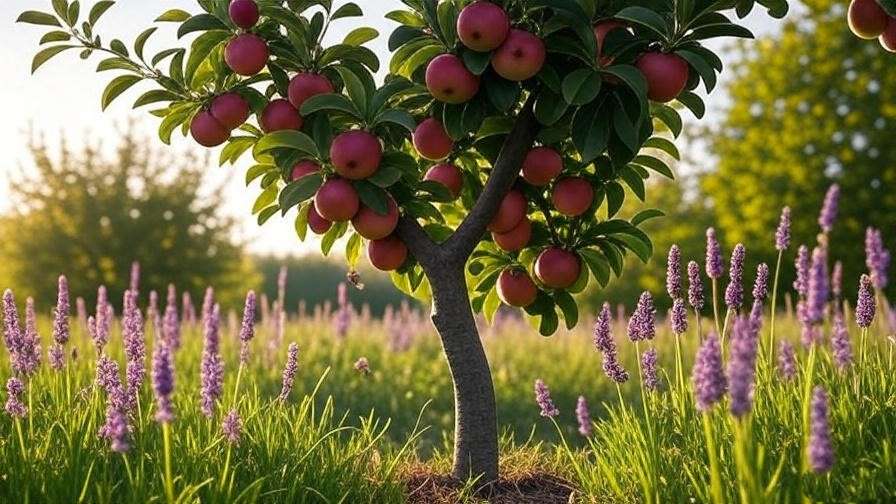
Maximizing Fruit Yield
To produce larger, healthier apples, thin fruit in early summer when apples are marble-sized. Remove excess fruit, leaving one apple per cluster, spaced 6–8 inches apart. This reduces strain on the tree and improves fruit quality. Harvest Anna apples in early summer (June–July in most regions), when they turn red with a slight yellow undertone and feel firm but not rock-hard. Taste-test a few apples to confirm ripeness. Regular thinning and proper pollination can double your yield over unthinned trees.
Seasonal Care Calendar 📅
Maintaining your Anna apple tree requires consistent attention throughout the year. Below is a month-by-month guide to keep your tree healthy and productive:
- Spring (March–May):
- Apply fertilizer as buds begin to swell to fuel new growth.
- Prune before bud break to shape the tree and remove dead or damaged branches ✂️.
- Monitor for early pests like aphids and apply organic controls if needed.
- Ensure consistent watering as new leaves and flowers emerge.
- Summer (June–August):
- Thin fruit to improve size and quality, removing excess apples in early June.
- Water deeply during hot weather, especially in dry climates ☀️.
- Harvest ripe apples (typically June–July) and check for pest activity like codling moths.
- Apply a second round of fertilizer in mid-summer for mature trees.
- Fall (September–November):
- Clean up fallen leaves and fruit to prevent pest overwintering.
- Add a 2–4-inch layer of mulch to insulate roots and retain moisture.
- Reduce watering as the tree enters dormancy, but don’t let roots dry out completely.
- Winter (December–February):
- Minimal care is needed, but check for structural damage from storms or heavy winds.
- In cooler zones, protect young trees with frost blankets if temperatures drop below 20°F.
- Plan for late winter pruning to prepare for the next growing season.
Table: Anna Apple Tree Monthly Care Checklist
| Month | Task | Notes |
| March | Fertilize, prune | Use 10-10-10 fertilizer; shape for open-center structure |
| June | Thin fruit, harvest | Leave one apple per cluster; check ripeness |
| September | Mulch, clean up | Remove debris to reduce pest risks |
| January | Inspect, plan pruning | Check for storm damage; prepare tools |
Troubleshooting Common Issues 🔍
Why Isn’t My Anna Apple Tree Fruiting?
If your Anna apple tree isn’t producing fruit, consider these potential causes:
- Lack of Pollination: Even though Anna is partially self-fertile, a nearby pollinator tree (e.g., Dorsett Golden) can significantly increase fruit set. Ensure bees have access to flowers by planting pollinator-friendly plants.
- Over-Pruning: Excessive removal of fruiting spurs can reduce yields. Focus on selective thinning cuts rather than heavy pruning.
- Nutrient Imbalance: Low phosphorus or potassium can hinder fruit development. Conduct a soil test through a local agricultural extension and adjust fertilization accordingly.
- Solutions: Plant a compatible pollinator, review pruning techniques, and apply a balanced fertilizer in spring.
Addressing Leaf Drop or Yellowing
Leaf drop or yellowing can signal stress. Common causes include:
- Water Stress: Overwatering or underwatering can cause leaves to yellow or drop. Check soil moisture with a finger test—soil should be moist but not soggy 2 inches below the surface.
- Pest Damage: Aphids or spider mites may cause leaf curling or discoloration. Inspect undersides of leaves and apply neem oil if pests are present.
- Poor Drainage: Compacted or clay-heavy soil can suffocate roots. Improve drainage with organic amendments or relocate the tree to a raised bed.
- Diagnostic Steps: Test soil pH and drainage, inspect for pests, and adjust watering practices. If issues persist, consult a local extension service for a lab analysis.
Dealing with Extreme Weather
Anna apple trees are hardy but can face challenges in extreme conditions:
- Heatwaves: In hot climates, mulch heavily (3–4 inches) to retain soil moisture and use shade cloth for young trees during intense heat ☀️. Water early in the morning to reduce evaporation.
- Frost: In cooler zones, late spring frosts can damage buds. Cover young trees with frost blankets or burlap if frost is forecasted.
- Wind: Stake young trees to prevent root disturbance and prune to reduce canopy weight in windy regions.
Harvesting and Using Anna Apples 🍎
When and How to Harvest
Anna apples typically ripen in early summer (June–July in most regions), earlier than many other apple varieties. Look for these signs of ripeness:
- Red blush covering most of the apple with a yellow undertone.
- Firm but not hard texture when gently squeezed.
- Sweet-tart flavor when sampled (taste-test a few apples).
To harvest, gently twist apples upward until they release from the branch. Avoid pulling, as this can damage spurs and reduce next year’s yield. Store apples in a cool, dry place (32–40°F) for up to 1–2 months. Use breathable containers like mesh bags to prevent moisture buildup.
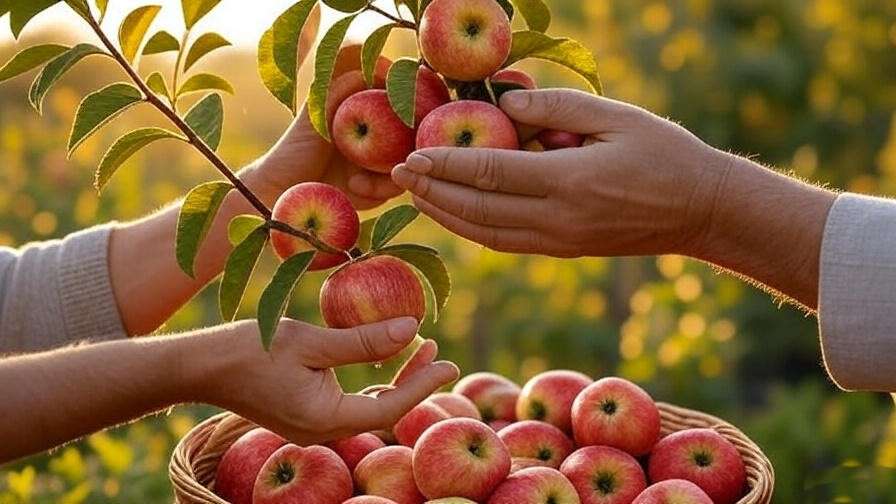
Delicious Ways to Enjoy Anna Apples
Anna apples are versatile, with a crisp texture and balanced flavor ideal for multiple uses:
- Fresh Eating: Enjoy straight from the tree for a refreshing snack.
- Baking: Use in pies, tarts, or cobblers for a sweet-tart kick.
- Sauces and Preserves: Cook into applesauce or can as apple butter.
- Cider: Blend with other apple varieties for homemade cider.
Recipe Idea: Anna Apple Crisp
- Ingredients: 6 Anna apples (peeled, sliced), 1 cup oats, ¾ cup brown sugar, ½ cup flour, ½ cup butter (melted), 1 tsp cinnamon, ¼ tsp nutmeg.
- Instructions:
- Preheat oven to 350°F.
- Place sliced apples in a greased 8×8-inch baking dish.
- Mix oats, sugar, flour, cinnamon, and nutmeg; stir in melted butter until crumbly.
- Sprinkle topping over apples and bake for 35–40 minutes until golden and bubbly.
- Serve warm with vanilla ice cream 🍦.
For long-term storage, freeze sliced apples in airtight bags or can them as pie filling. Dehydrating is another great option for healthy snacks.
Long-Term Care for a Thriving Anna Apple Tree 🌳
Maintaining Tree Health Over Years
To ensure your Anna apple tree remains productive for decades:
- Soil Testing: Test soil annually to monitor pH and nutrient levels. Amend with lime for acidic soils or sulfur for alkaline soils.
- Rejuvenation Pruning: For older trees, remove 20–30% of old wood every 3–5 years to stimulate new growth. Focus on crowded or crossing branches.
- Structural Checks: Inspect for weak branches or exposed roots, especially after storms. Secure loose roots with soil and mulch.
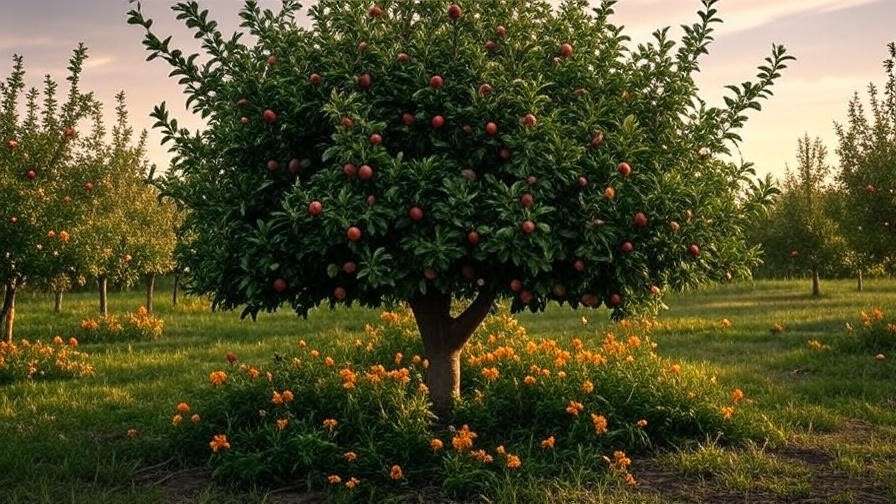
Scaling Up: Growing Multiple Anna Apple Trees
For those dreaming of a small orchard, consider these tips:
- Spacing: Plant standard trees 15–20 feet apart and dwarf trees 8–10 feet apart to ensure adequate light and air circulation.
- Pollination: Include at least one compatible pollinator variety for every 3–4 Anna trees to maximize fruit set.
- Companion Planting: Intercrop with pest-repelling plants like marigolds or chives to naturally deter aphids and other insects.
A small orchard can yield enough apples for personal use, gifting, or even selling at local markets, adding both joy and value to your garden.
FAQs About Anna Apple Tree Care ❓
Q1: Can Anna apple trees grow in hot climates?
Yes! Anna apple trees are ideal for warm regions with low chill hours (200–300). They thrive in USDA zones 5–9, including hot areas like Florida or Southern California.
Q2: How long does it take for an Anna apple tree to bear fruit?
Typically, Anna trees produce fruit within 2–3 years of planting, with full production by year 5 if properly cared for.
Q3: Do I need two Anna apple trees for pollination?
While Anna is partially self-fertile, planting a second low-chill variety like Dorsett Golden within 50 feet boosts fruit yield significantly.
Q4: What’s the best way to prevent pests organically?
Use neem oil, introduce beneficial insects like ladybugs, and maintain tree health through proper pruning and sanitation to deter pests naturally.
Q5: How do I know if my Anna apple tree is healthy?
Look for vibrant green leaves, steady growth (6–12 inches annually), and consistent fruit production. Yellowing leaves or stunted growth may indicate stress or nutrient issues.
Conclusion
Growing a thriving Anna apple tree is a rewarding journey that brings beauty, shade, and delicious fruit to your garden 🌳🍎. By choosing the right location, providing consistent care, and addressing challenges like pests or poor fruit set, you can enjoy abundant harvests for years to come. Start with proper planting, follow the seasonal care calendar, and don’t hesitate to troubleshoot issues using the expert tips provided. Ready to plant your Anna apple tree? Share your progress in the comments or join a gardening community for more inspiration! 🌟

